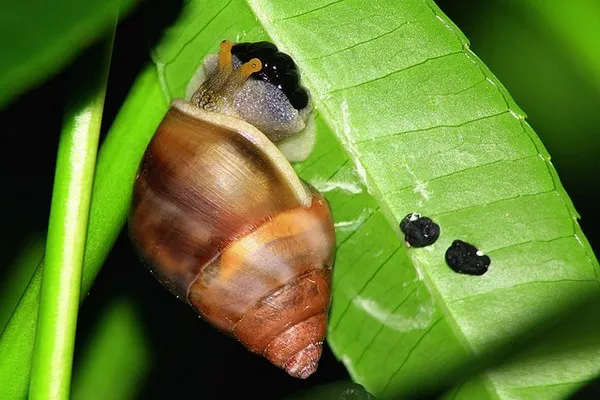Grasshoppers can be a significant nuisance for gardeners, devouring plants and causing damage to crops. These voracious insects can quickly decimate gardens if left unchecked. However, there are several effective strategies that gardeners can employ to deter grasshoppers and protect their plants. By implementing a combination of preventative measures and control methods, gardeners can successfully reduce grasshopper damage and maintain healthy gardens.
Understanding Grasshopper Behavior
Before delving into strategies for controlling grasshoppers, it’s essential to understand their behavior and lifecycle. Grasshoppers are herbivorous insects that feed on a wide variety of plants, including vegetables, fruits, and ornamental plants. They are most active during warm, dry weather conditions and are known for their ability to jump long distances.
Grasshoppers undergo incomplete metamorphosis, meaning they hatch from eggs into nymphs, which resemble smaller versions of adults. Nymphs molt several times before reaching adulthood, during which they grow larger and develop wings. Adult grasshoppers are fully formed and capable of flight, allowing them to move easily between different areas.
Preventative Measures
Preventing grasshopper damage begins with creating an environment that is less attractive to these pests. Here are some preventative measures gardeners can take:
1. Crop Rotation: Rotating crops each season can help disrupt grasshopper breeding cycles by depriving them of their preferred host plants. By planting different crops in the same area each year, gardeners can reduce the buildup of grasshopper populations.
2. Tillage: Turning over the soil in garden beds can expose grasshopper eggs to predators and adverse weather conditions, reducing their survival rate. Regular tilling can also disrupt grasshopper habitats and make the environment less hospitable for egg laying.
3. Row Covers: Covering plants with lightweight row covers can provide physical protection against grasshoppers while still allowing air, water, and sunlight to reach the plants. Row covers should be securely anchored to the ground to prevent grasshoppers from crawling underneath.
4. Companion Planting: Planting repellent herbs and flowers, such as basil, marigolds, and cilantro, among susceptible crops can help deter grasshoppers. These companion plants emit strong scents that mask the odor of host plants and make them less appealing to grasshoppers.
5. Maintaining Healthy Soil: Healthy soil produces vigorous plants that are more resilient to pest damage. Fertilizing soil with organic amendments and maintaining proper irrigation can promote plant growth and strengthen their natural defenses against grasshoppers.
Control Methods
In addition to preventative measures, there are several control methods that gardeners can use to manage grasshopper populations:
1. Biological Control: Introducing natural predators and parasites of grasshoppers can help keep their populations in check. Predatory insects such as birds, spiders, and praying mantises feed on grasshoppers, while parasitic wasps lay their eggs inside grasshopper nymphs, eventually killing them.
2. Diatomaceous Earth: Sprinkling food-grade diatomaceous earth around garden plants creates a barrier that damages the exoskeletons of grasshoppers, causing them to dehydrate and die. Diatomaceous earth should be reapplied after rain or irrigation to remain effective.
3. Kaolin Clay: Kaolin clay can be sprayed onto plants to form a protective coating that deters grasshoppers and other pests. The fine particles adhere to the leaves and stems, making them less palatable and more difficult for grasshoppers to consume.
4. Neem Oil: Neem oil, derived from the neem tree, contains compounds that disrupt the feeding and reproductive behavior of grasshoppers. It can be applied as a foliar spray to deter grasshoppers and other chewing insects while also providing some protection against fungal diseases.
5. Insecticidal Soap: Insecticidal soaps are effective at controlling soft-bodied insects like grasshopper nymphs. These soaps work by suffocating insects upon contact, making them a safer alternative to chemical insecticides for use in organic gardening.
Integrated Pest Management (IPM)
Integrated Pest Management (IPM) is a holistic approach to pest control that combines multiple strategies to minimize the use of chemical pesticides. By incorporating cultural, biological, and mechanical control methods, gardeners can effectively manage grasshopper populations while minimizing harm to the environment. Here are some key principles of IPM:
1. Monitoring: Regularly inspecting plants for signs of grasshopper damage and population levels can help gardeners determine when intervention is necessary. Visual surveys, sticky traps, and sweep netting are common methods for monitoring grasshopper activity.
2. Thresholds: Establishing action thresholds based on the level of acceptable damage can guide decision-making about when to implement control measures. Minor damage may be tolerated if it does not significantly impact plant health or yield.
3. Cultural Practices: Implementing cultural practices that promote plant health and reduce pest pressure can help prevent grasshopper infestations. This includes proper irrigation, fertilization, and weed management to create unfavorable conditions for grasshoppers.
4. Mechanical Control: Physical methods such as handpicking grasshoppers, vacuuming them up with a handheld vacuum, or using barriers like chicken wire fences can be effective for small-scale control in home gardens.
5. Selective Chemical Control: If grasshopper populations reach damaging levels and other control methods have been ineffective, selective chemical insecticides may be used as a last resort. It’s essential to choose products that are specifically labeled for grasshopper control and follow application instructions carefully to minimize non-target effects.
Conclusion
Grasshoppers can pose a significant threat to garden plants, but with careful planning and implementation of effective control measures, gardeners can protect their crops and minimize damage. By combining preventative strategies, biological controls, and integrated pest management techniques, gardeners can create healthy and resilient gardens that are less susceptible to grasshopper infestations. With persistence and vigilance, gardeners can enjoy bountiful harvests while keeping grasshoppers at bay.


